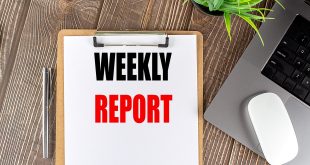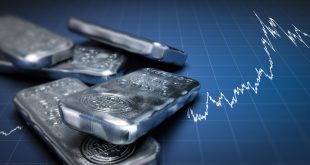US equities fell on Tuesday as the Federal Reserve started its two-day meeting as the effects of First Republic Bank’s (FRC) failure continued to weigh on bank stocks.
During lunchtime trading, the Dow Jones Industrial Average dropped more than 400 points, or 1.4%, while the S&P 500 sank 1.48%. The heavily tech-focused Nasdaq Composite fell 1.24%. As new Labour Department data revealed that the labour market is still cooling, government bonds fell. The yield on a 10-year note decreased to 3.4%, and the yield on a two-year note decreased to 3.9%.
Since the failures of Silicon Valley Bank and Signature Bank in March, regulators took control of First Republic and sold the majority of its assets to JPMorgan Chase, causing it to fail.
First Republic has experienced a tumultuous journey after teetering on the verge of bankruptcy for almost two months. The local lender announced this week that first-quarter deposit outflows reached over $70 billion.
Investors are concerned that regional banks’ darkest days are still ahead. By midday, the S&P 500 regional banking index (KRE) had decreased by about 7%. Shares of Western Alliance Bancorporation (WAL) and PacWest Bancorp (PACW) both fell by as much as 26%.
Investors are also eagerly awaiting the Fed meeting’s conclusion, which is anticipated to be released on Wednesday. Rate increases by a quarter point are generally anticipated from the Fed. Investors’ primary attention will be on whether Fed Chair Jerome Powell provides any signals as to what may lie ahead at the central bank’s June meeting.
Some market participants are betting that the central bank will keep its hawkish stance and may even hint at an increase in June. Others predict that the Fed will hold off on raising interest rates while simultaneously holding off on lowering them through the end of the year, keeping the federal funds rate constant at slightly over 5% for the foreseeable future.
If the message from this meeting causes bond market expectations for rate cuts in the second half of ’23 to be re-priced (i.e., rate cuts get priced out, leading to an implied path that’s more in line with our economists’ view for a pause), that could ultimately be a bad surprise for stocks.
On Friday, Wall Street will focus on the jobs report for April. According to new economic data released by the Bureau of Labour Statistics on Tuesday, there were 9.6 million fewer job opportunities in March than the 9.7 million predicted by experts. The Job Openings and Labour Turnover Survey, or JOLTS, published on Tuesday by the Labour Department revealed a little decline in the quit rate to 2.5% and a rise in layoffs to 1.8 million.
Although they do indicate that the overall amount of policy tightening is beginning to have its desired effect on businesses’ labour demand, the signs of labour market softness won’t be a game-changer for tomorrow’s FOMC meeting, according to JPMorgan economist Michael Feroli in a research note.
Apple’s expected quarterly reports on Thursday will be another major event this week in terms of earnings.
On the strength of solid quarterly earnings reports and profit growth year over year, HSBC’s US-listed shares increased by 3%. The multinational bank also declared the restoration of its quarterly dividend and a forthcoming $2 billion share buyback programme.
After the company reported first-quarter revenue that exceeded analysts’ expectations, shares of the world’s largest ride-hailing company, Uber, increased by more than 8%. The quarter’s revenue increased 29% year over year. According to CEO Dara Khosrowshahi, Uber has had a “strong start” to the new year.

 Noor Trends News, Technical Analysis, Educational Tools and Recommendations
Noor Trends News, Technical Analysis, Educational Tools and Recommendations




